Yes We Tech: CS Unplugged
Made by Miss-Bit
Can you think like a computer? What would that mean? Why should you try? Computational thinking "requires understanding the capabilities of computers, formulating problems to be addressed by a computer, and designing algorithms that a computer can execute" (K12 CS Framework). In other words, we use it to solve problems.
Computational thinking is at the heart of computer science. One of the easiest and most engaging ways to introduce it is through unplugged activities. Here are some of my favorites to do with Tech-Girls & at St. Anne's-Belfield School.
21st Century Skills
Tags
computational thinking computer science unpluggedLearning Objectives
- Explore foundational computer science concepts through hands-on activities
- Practice computational thinking skills
Audience
- This teaching kit is geared toward supporting anyone who wants to engage learners with computational thinking
More resources
- Computational Thinking (K-12 CS Framework)
- CS Fundamentals Unplugged from code.org
- Exploring Computational Thinking from Google for Edu
-
My Robotic Friends
30-60 minutes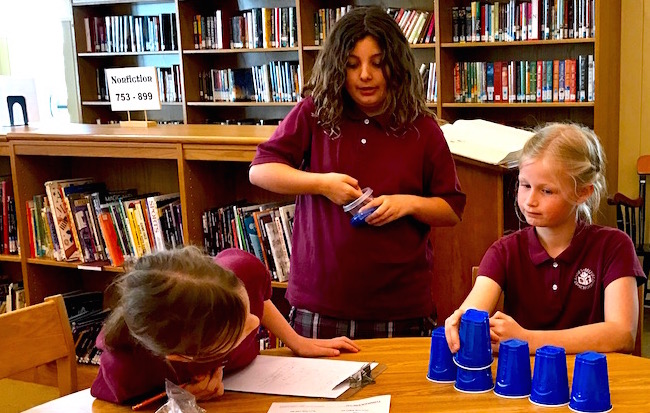
This activity is a great way to show the power of coding. The robot can only do what you tell (or code) it to do.
Materials
- My Robotic Friends instructions
- Print out Symbol Key (1 per group)
- Print out Cup Stack Pack (1 per group)
- Disposable Cups or Paper Trapezoids (6 or more per group)
- Paper & pencil (1 per person)
Things to discuss:
- A set of instructions is also called an algorithm.
- If you miss an instruction or get them out of sequence what happens?
- Why is important to define a set of instructions or code for your robot?
- Are there any other instructions you would add to the code library?
More resources
- Read this: Civilization is Built on Code
- Play this: RoboRally or Robot Turtles
-
Sorting Algorithms
30-45 minutes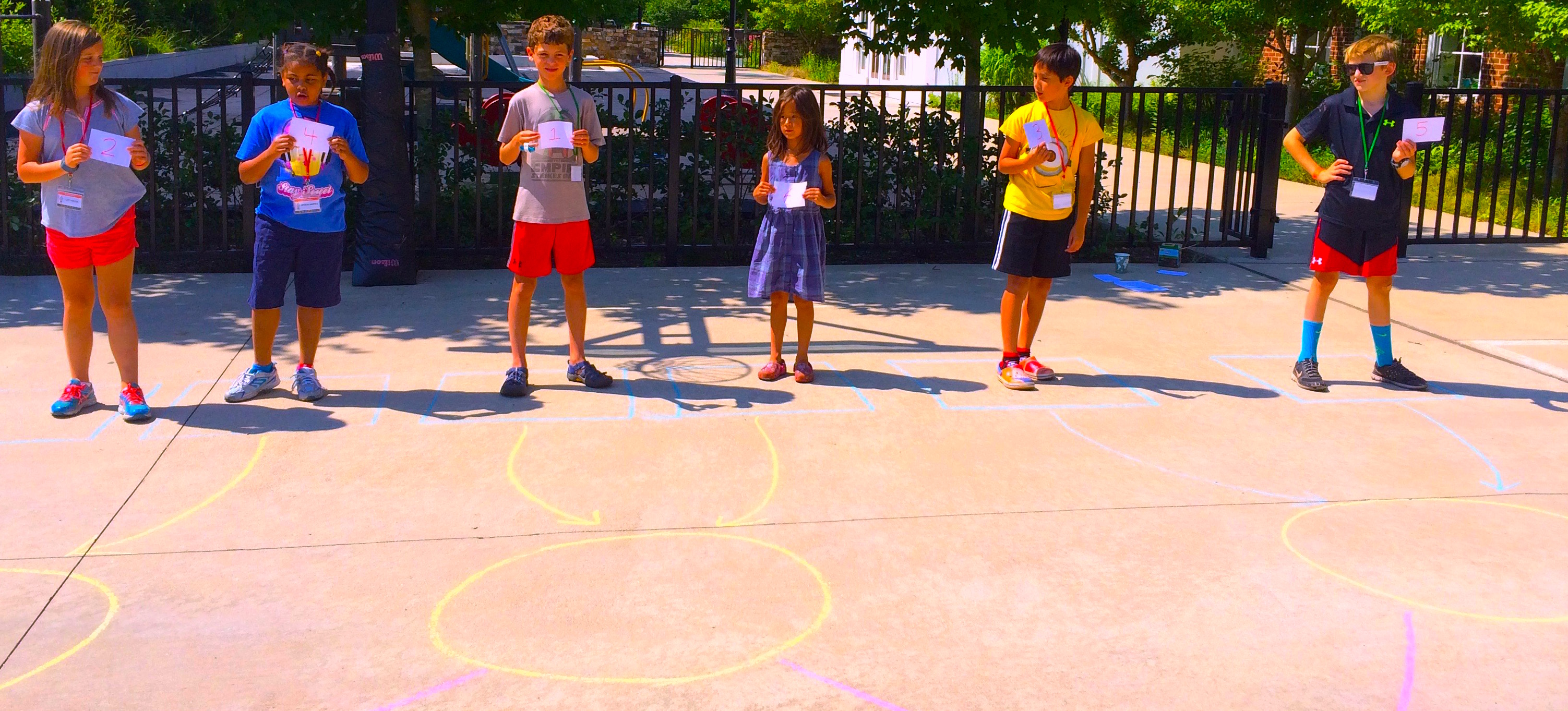
The Sorting Networks activity puts learners inside a sorting algorithm. Write 6 random numbers on 6 sheets of paper and students will walk the algorithm to sort them.
Materials
- Sorting Networks instructions
- Chalk (outside) or masking tape (inside)
- Paper & pencil
Things to discuss
- What happens if you change an instruction?
- Can the network be used backwards?
- When comparisons on the numbers are done simultaneously, that is called parallel processing and often this speeds up the task. Time the activity doing the comparisons simultaneously vs. one at a time.
- What every day tasks can be sped up using parallel processing? What tasks would not be faster with parallel processing?
More resources
- Watch this: Sorting Networks demonstration
-
Divide & Conquer
30-45 minutesUsing ping pong balls, the divide & conquer strategy shows how the binary search algorithm works to look up information from any size list.
Materials
- Demo of how this activity can be run
- At least 10 ping pong balls with numbers or animal names written on them
- As many cups as ping pong balls (not clear)
Things to discuss
- How many times would you run through this algorithm if there were 100 ping pong balls? How about 10,000?
- This is called a binary search. Why do you think it has that name?
- What are some examples you can think of where a search algorithm like this might be used by a computer?
More resources
- Watch this: Divide & Conquer demonstration
- Have the group come up with the recipe (psuedocode) for this activity and then check out the code in this Illustrated Binary Search Algorithm
-
Card Flip Magic
30-45 minutes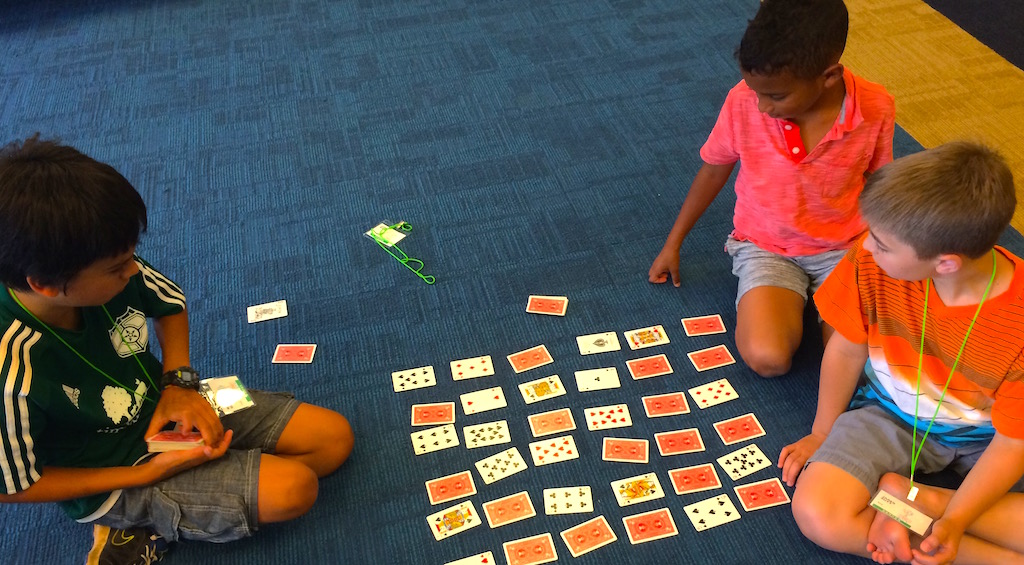
Card Flip Magic shows how computers can detect errors in the binary data it stores & sends. You can use regular playing card decks for this trick, you just need to decide ahead of time which suit, red or black, will represent which state, 1 or 0 (on or off). Be sure to practice this trick ahead of time, so you can amaze and astonish!
Materials
- Card Flip Magic demonstration
- Card Flip Magic instructions
- 1 deck of cards per 2-4 students.
Things to discuss
- What are some examples of data you send from a computer? Why is it important to you that it arrives without error? Can you think of a way your data might get corrupted?
- What happens if two or more cards are flipped?
- In this trick, something called even parity is used. Can the trick be done with odd parity?
-
Graph Paper Programming
30-60 minutesThis is a great activity to start thinking abstractly about what computers are doing with the code we put into them. You will:
- Learn the commands for creating a program to recreate an image.
- Make a simple image using graph paper.
- Create a program using the commands shared above to code the image.
- Give the program to a friend ("computer") with a blank piece of graph paper and see if they can recreate your image based on your program.
- If you have time, you can extend this activity to start learning about procedures. Procedures are useful when you discover a pattern that you will need to repeat in your code.
Things to discuss
- An algorithm is a list of steps to solve a problem. What every day tasks to do you do using an algorithm?
- Debugging is troubleshooting a problem with your program. What are some strategies you can use you debug your program?
- Read this: Debugging Recipes for help on troubleshooting your program.
- Try this: use this activity as an intro to LightBot
More Resources
-
Binary Bracelets
30-60 minutes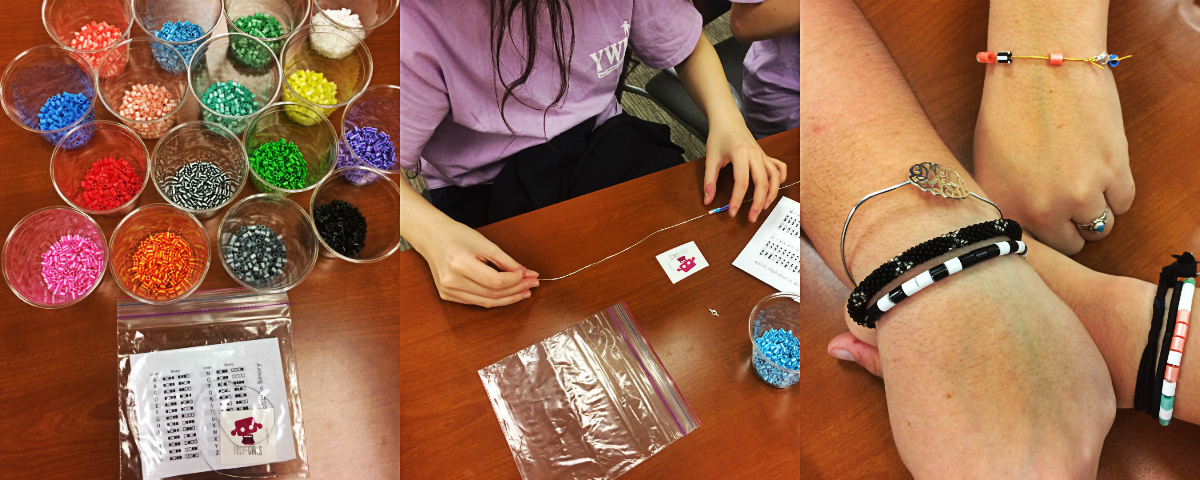
One of the fundamental computer science concepts is that everything we do on a computer is really just turning binary digits on and off. Even though this sounds simple, it can be a concept that is hard to wrap one's head around. This activity brings the binary concept to reality through the creation of binary bracelets.
Materials
- perler beads
- thick elastic cord
- print out activity guide for yourself
- print out enough copies of the Binary worksheet for each participant.
- Pro tip: if you have limited time, pre-cut lengths of elastic cord and double knot on one end. Pack that along with Binary worksheet into zip lock bag ahead of time. Girls can then also package up their beads if they run out of time.
- Don’t have access to supplies? There is an alternate Binary Bookmark activity where you can use crayons or markers to create a bookmark.
- computer & projector (optional)
Instructions
- Ask what makes a computer work? Eventually, someone will mention electricity or power. Talk about how we turn lights on or off. Because a computer is built on electronics, that's all it fundamentaly understands - on or off, 1 or 0.
- How do humans communicate with computers? We don't speak 1s and 0s. Show how we can use binary (base 2) to add up to decimal numbers (base 10) by turning the binary code on (1) or off (0).
- For a while, the only way humans could communicate with computers was with numbers, but now we can use words and code. To do that, a group of folks got together to agree to a standard called ASCII, assigning letters to numbers. You are going to take the numbers associated with your initials or a 3-letter word and create a binary bracelet.
- Pro tip: here is a letter to number to binary ASCII table cheatsheet.
Things to discuss
- Ever seen a binary clock? Not so simple to read for humans (at least not this human).
- If you have 10 minutes & are working with middle schoolers or older, Crash Course Computer Science: Representing Numbers and Letters with Binary video has a great explanation.
- If you are working with younger students or only have 5 minutes, then Count the Dots from CS Unplugged is a good option.
- If you need to go unplugged, then Binary Baubles from Thinkersmiths (pages 18-21) provides the info you need to explain binary & this activity.
-
LED Cards
15-30 minutes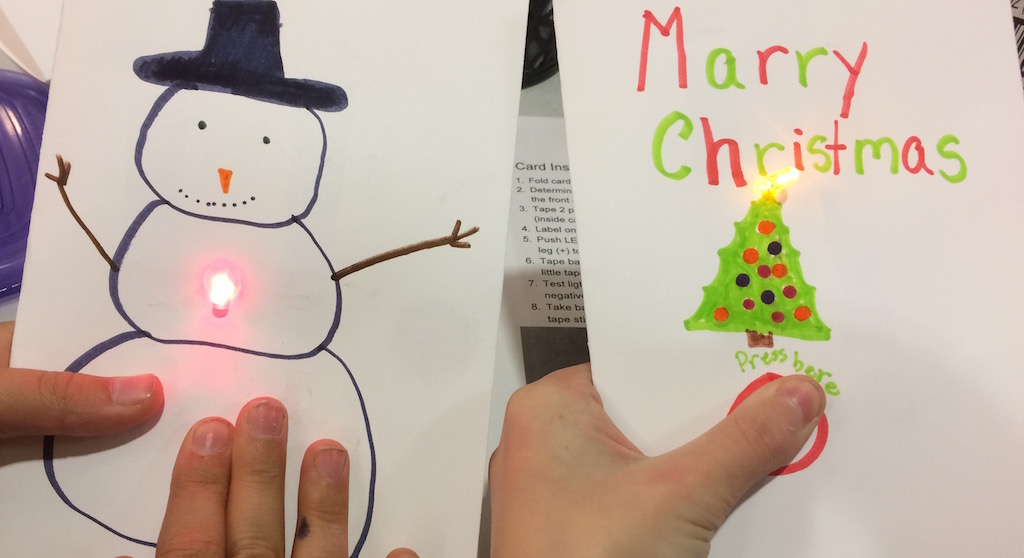
When you make an LED card, you are bringing together the fundamentals of electronics that make up computers - power (battery), input (an open or closed circuit) & output (LED light). It’s also a great way to reinforce that the binary states of on and off are at the core of all computing.
Materials
- Cardstock paper
- 3V coin batteries
- LEDs
- Aluminum tape
- Masking or scotch tape
- Scissors
- Colored pens/pencils
Instructions
- Fold cardstock paper in half and create artwork on front.
- Determine where light will go & gently poke a very small hole through card.
- Tape 2 pieces of conductive tape parallel on either side of the hole (inside card).
- Label one piece of tape + (positive) and the other – (negative).
- Push light through hole. Tape shorter leg (-) to negative tape & longer leg (+) to positive tape. Make sure the end of leg is on tape.
- Tape battery down (positive side down to positive tape). Use just a little tape, most of the battery needs to be uncovered.
- Test light by laying final piece of conductive tape across battery & negative tape to complete the circuit.
- Take backing off final piece of tape and lay across battery. Close card, so it sticks on opposite side.
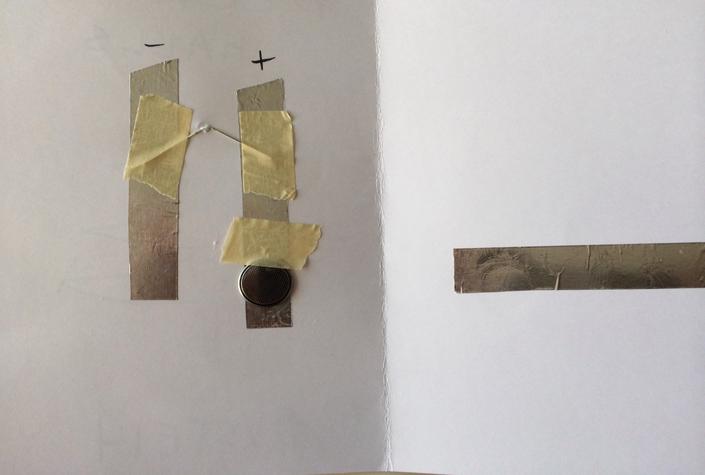
More resources
-
More Unplugged Activities
There are so many unplugged activities! Do you have a favorite that I didn't cover? Please let me know (kim@tech-girls.org)!
- HTML Puzzle Box is a fun game to play with a group to help you understand how HTML tags are put together to build a web page.
- Drawing Dinos is a fun drawing activity to help you understand the concept of styling instructions, also known as CSS, for the web.
- Build Your Own Computer from Hello Ruby is a great activity to explore that inside of a computer.
- CS Unplugged